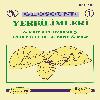Stratigraphic and sedimentologic approach to the Aptian-Campanian erosional unconformity in the Aydıncık (İçel) area, Central Taurides, S Turkey
Orta Toroslar'da yer alan Aydıncık (İçel) yöresi geç Kampaniyen çökellerinin biyostratigrafik ve sedimantolojik incelemesi sonucu iki birim ayırtlanmıştır. Bu birimler zaman içinde birbirini izlerler, ancak çökelmeyle eş yaşlı bir blok faylanma ile ayrılırlar. İlk birim Jura-Erken Kretase platform karbonatlarını açısal bir uyumsuzlukla örter ve resif önü biyoklastik vaketası ve platformdan türemiş köşeli parçalar içeren karbonat breşlerinden oluşur. Bu birim içinde bulunan taşınmış şelf organizmaları bentik foraminifer, radiolitid, ekinoderm parçalarıdır ve bunlar kalsisfer ve ender olarak bulunan globotruncanidlerle birliktedirler. Orbitoides medius (d'ARCHIAC) ve Pseudosiderolites vidali (DOUVILLE) türlerinin varlığı geç Kampaniyen yaşını belirtir.İkinci birim bol planktonik foraminifer içeren, gri-kırmızı marnlı kireçtaşları ve ayrıca merceksi konglomeralardan oluşan kıta yamacı eteği-havza çökelleriyle temsil edilir. Bu birim içerisinde Globotruncanita calcarata (CUSHMAN) türünün bulunuşu geç Kampaniyen yaşına işaret eder. Her iki birim de üste doğru derinleşen bir çökel istifini temsil ederler ve ani gömülen platformu gösterirler. Geç Kretase pelajik karbonat çökelimi olasılıkla Maastrihtiyen'deki silis kırıntılı malzeme girişiyle sona ermiştir.
Aydıncık (İçel) yöresindeki Apsiyen-Kampaniyen aşınma uyumsuzluğuna stratigrafik ve sedimantolojik yaklaşım
In late Campanian sediments of the Aydıncık area (Central Taurides, S Turkey), two lithostratigraphic units have been described considering biostrati graphic and sedimentologic aspects. These units succeed each other in time, but are seperated by a synsedimentary block-faulting surface. The first unit unconformably overlies the Jurassic-Early Cretaceous platform carbonates, and consists of fore-reef bioclastic wackestones and carbonate breccias containing angular clasts derived from the underlying platform. In the unit, transported shelf organisms are benthic foraminifers, radiolitid, and echinoderm associated with calcispheres and rare globotruncanids. The presence of Orbitoides medius (d'ARCHIAC) and Pseudosiderolites vidali (DOUVILLE) indicates a late Campanian age. The second unit is represented by lower slope to basinal pelagic sediments which consist mainly of gray to red marly limestones with abundant planktonic foraminifers and also lenticular conglomerates. The both units characterize an upward deepening sequence, and reflect abrupt drowning of the platform. In the second unit, the presence of Globotruncanita calcarata (CUSHMAN) indicates late Campanian age. The Late Cretaceous pelagic carbonate deposition was ceased by influx of siliciclastic material during probable Maastrichtian time.
